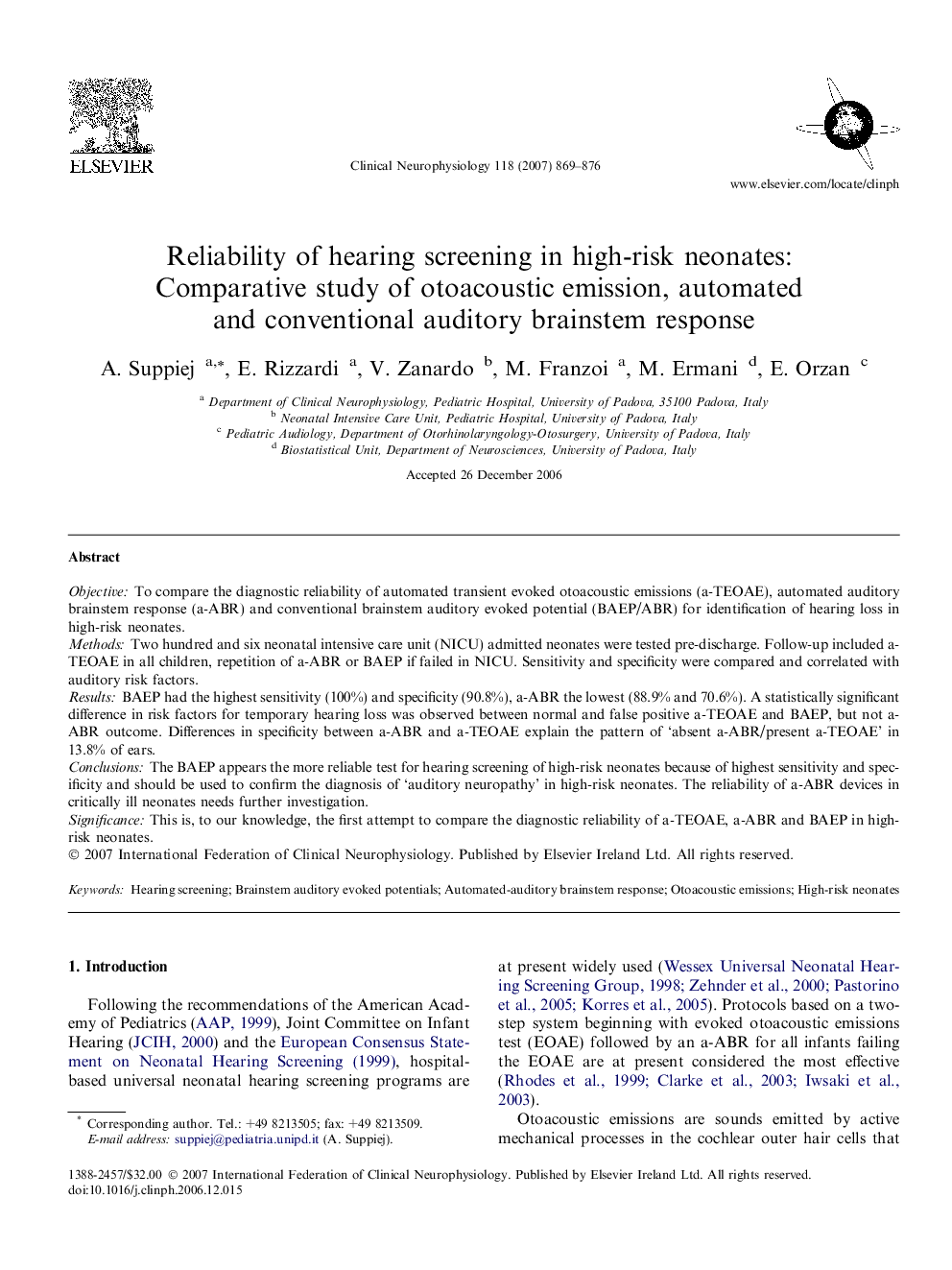| Article ID | Journal | Published Year | Pages | File Type |
|---|---|---|---|---|
| 3047917 | Clinical Neurophysiology | 2007 | 8 Pages |
ObjectiveTo compare the diagnostic reliability of automated transient evoked otoacoustic emissions (a-TEOAE), automated auditory brainstem response (a-ABR) and conventional brainstem auditory evoked potential (BAEP/ABR) for identification of hearing loss in high-risk neonates.MethodsTwo hundred and six neonatal intensive care unit (NICU) admitted neonates were tested pre-discharge. Follow-up included a-TEOAE in all children, repetition of a-ABR or BAEP if failed in NICU. Sensitivity and specificity were compared and correlated with auditory risk factors.ResultsBAEP had the highest sensitivity (100%) and specificity (90.8%), a-ABR the lowest (88.9% and 70.6%). A statistically significant difference in risk factors for temporary hearing loss was observed between normal and false positive a-TEOAE and BAEP, but not a-ABR outcome. Differences in specificity between a-ABR and a-TEOAE explain the pattern of ‘absent a-ABR/present a-TEOAE’ in 13.8% of ears.ConclusionsThe BAEP appears the more reliable test for hearing screening of high-risk neonates because of highest sensitivity and specificity and should be used to confirm the diagnosis of ‘auditory neuropathy’ in high-risk neonates. The reliability of a-ABR devices in critically ill neonates needs further investigation.SignificanceThis is, to our knowledge, the first attempt to compare the diagnostic reliability of a-TEOAE, a-ABR and BAEP in high-risk neonates.
